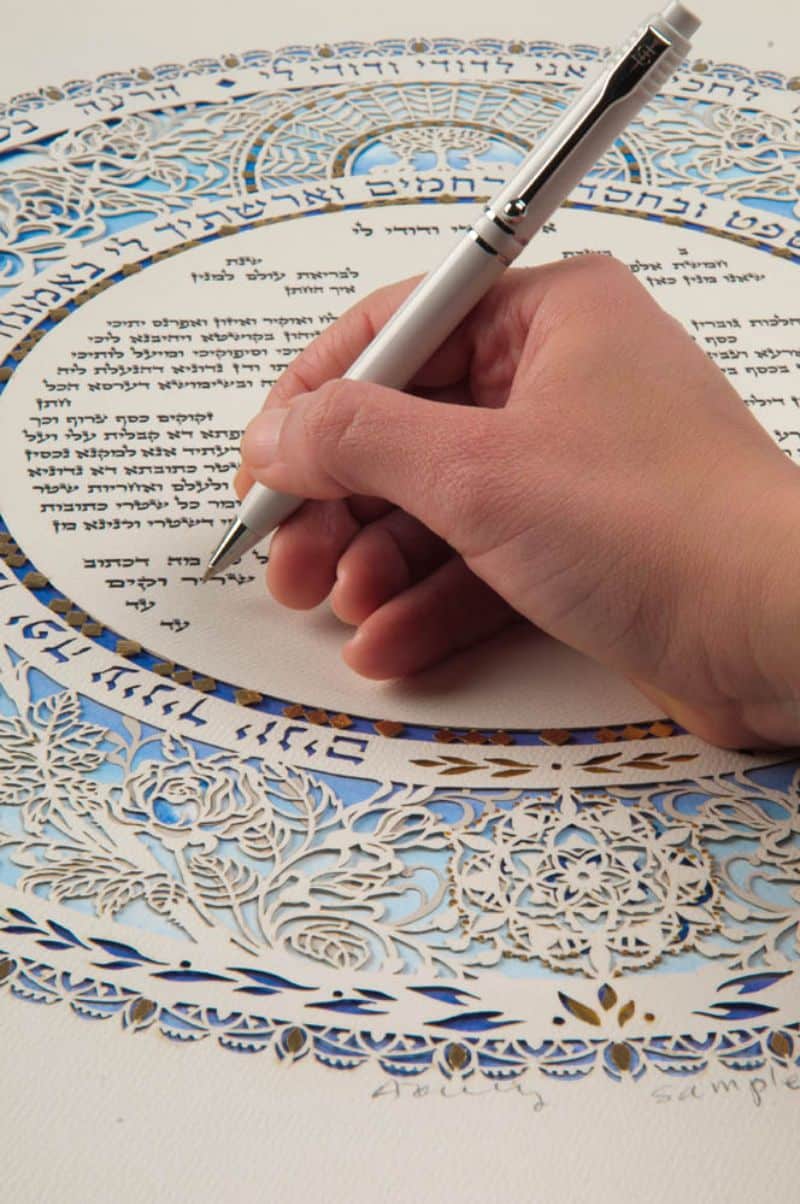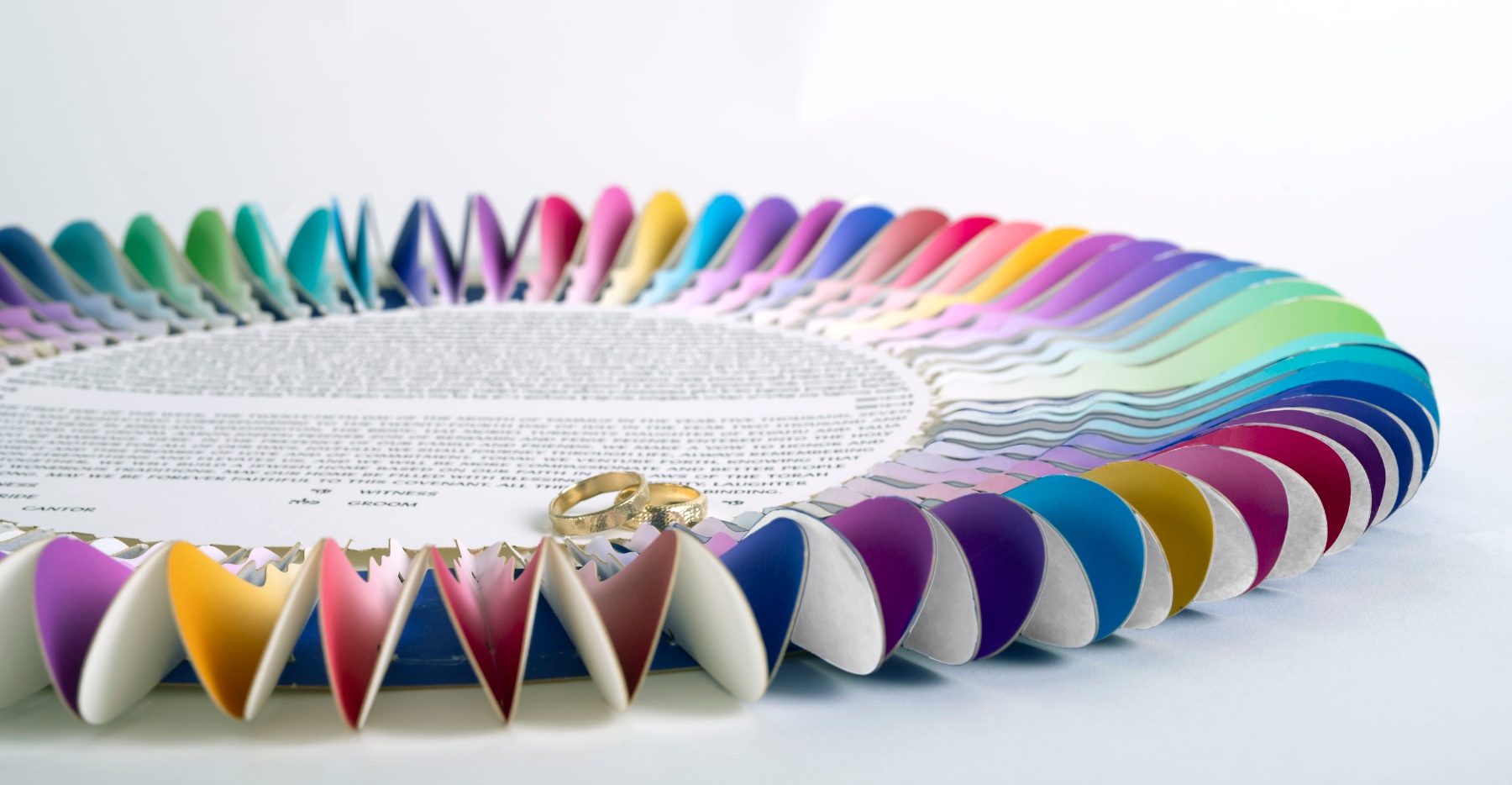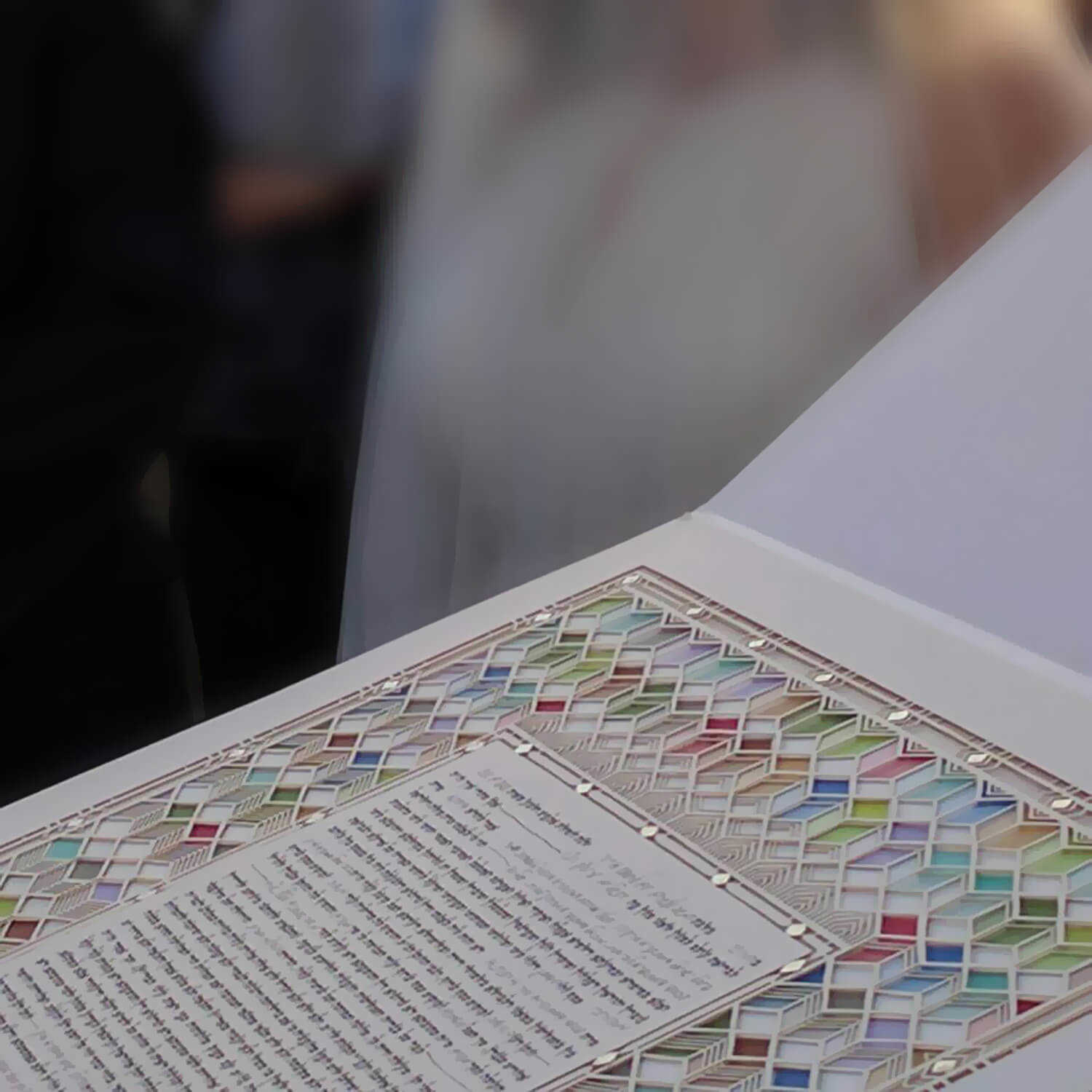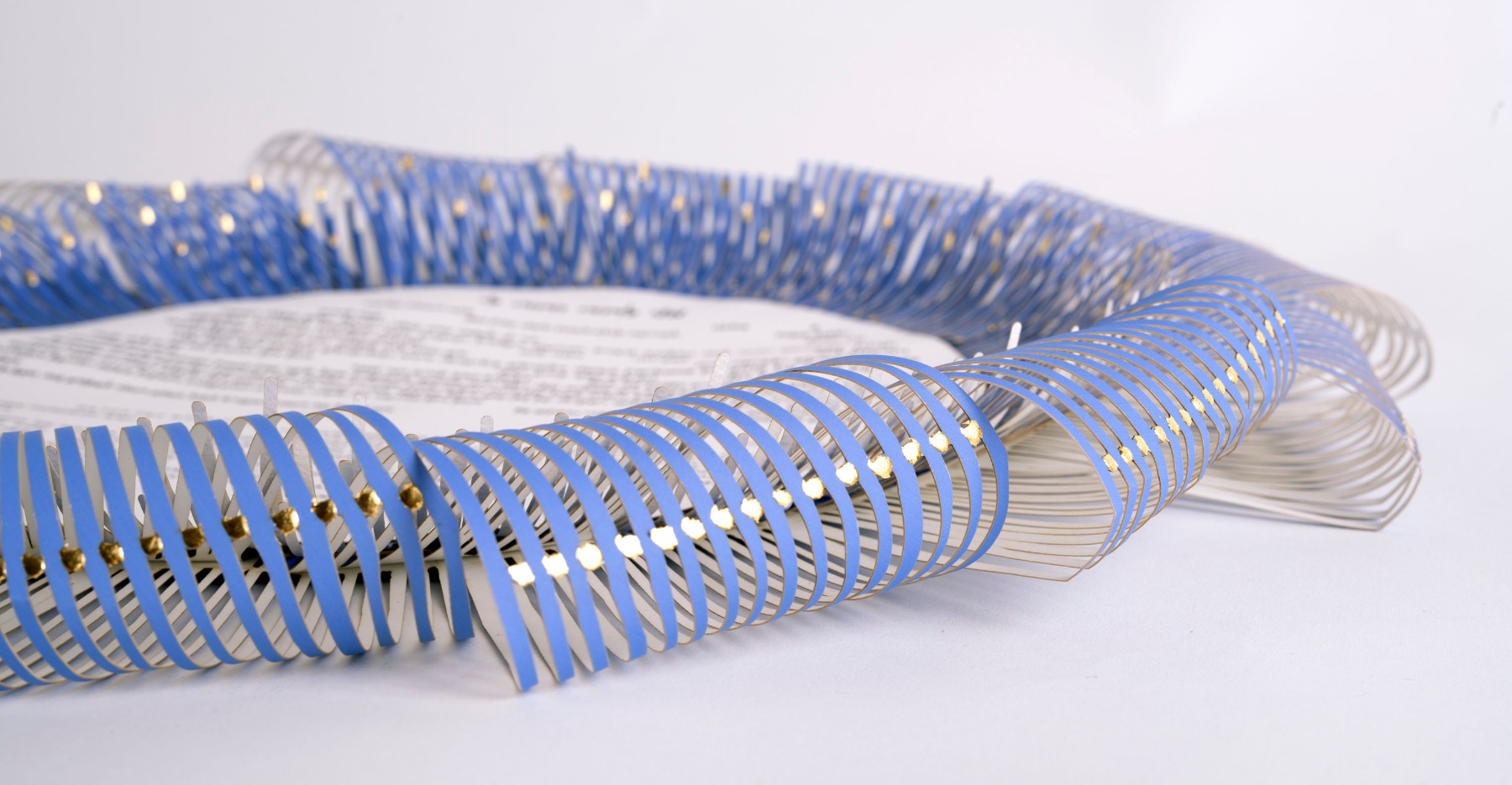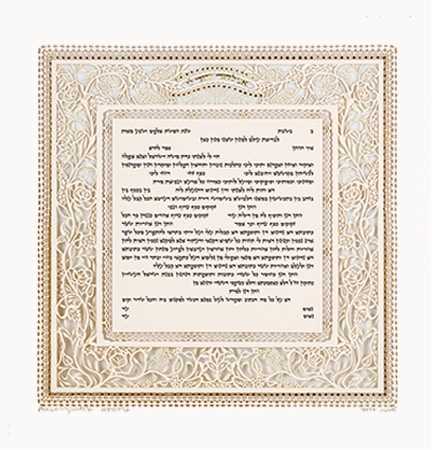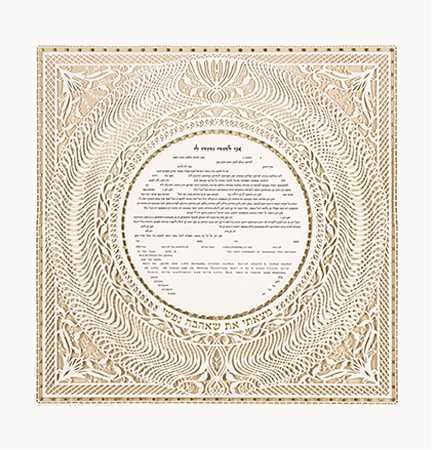Interfaith Ketubah Text

When planning an interfaith wedding ceremony, like any wedding, it can feel and become overwhelming. It’s important to remember that the wedding ceremony is about the bride and groom, and how their lives will be united and connected from that moment on. Contemplating which traditions to include and which ones to omit without hurting the feelings of devoted family members can also add a little extra stress. There are many customs, rituals and traditions observed in a Jewish wedding, and while it may be challenging trying to decide what to include and what to exclude, it can also be a wonderful opportunity to discover what is, and isn’t, important to you concerning religion and spirituality. The ketubah, and choosing to create an interfaith ketubah text is a great place to start.
What Exactly Does an Interfaith Ketubah Text Include?
The traditional ketubah was originally a legal contract, the text included provisions for the food, shelter and clothing of the wife as well as compensation for her should the marriage end in divorce. When researching for the interfaith ketubah text you’d like to use, you’ll find a variety of samples. Some interfaith ketubah texts keep some of the original ketubah text while other interfaith ketubah texts shift to the more personal including promises of love and commitment. Some interfaith ketubah texts incorporate features from the religions of both couples, while others focus more on the common spirituality of the couple.
When thinking about the words you’d like to have expressed on the ketubah, it is helpful to understand the focus of a modern Ketubah. Combining the traditional sections that include the date and names for interfaith couples remains the same. However, they may choose to use text that describes how their faiths will work together and their pledges to each other. Some will use the ketubah to reflect on their current-day values as they embark upon their journey together, using more modern expressions and incorporating humor in their text.

Two of a Kind Ketubah for interfaith couples
Today, within the Jewish tradition, interfaith marriages are still not recognized outside of the sanctity of the synagogue. And yet, more couples are moving away from traditional Jewish weddings as they continue following their faiths within the relationship. The personal ketubah can be customized to reflect this independence of religious practice, and the wording remark on what is most important to interfaith couples for their married life.
Jewish-inspired ceremonies still occur, and many Jewish symbols can be incorporated, including the chuppah, ring exchange, Sheva Brachot, and glass-breaking. Naturally, the ketubah will factor into the ceremony as well. While the ceremony may not be conducted in a synagogue or under the advocacy of a synagogue, independent Rabbis and some more liberal synagogues will perform a blessing, which differs from a wedding, but still include Jewish traditions and a ketubah. However, the couple must retain a license at the registry office or have a registrar present at their licensed venue.
Considering this more liberal era, creating an artful Ketubah for your interfaith wedding ceremony is especially meaningful.
Family Traditions Within the Ketubah
Some couples may wish to incorporate wording that speaks of family traditions and values from both the bride and groom’s side into their contemporary ketubah. They can integrate traditional language mixed with text that reflects their interfaith values if they choose.
Contemporary ketubahs will usually outline the vows of trust, respect, and love for each other and how they plan to honor that love during the marriage.
Expressions within the ketubah can be as lighthearted as serving a favorite dish on each anniversary. The main point is that these inclusions are personal to the couple, and they are free to decide how they want to express their traditions within their ketubah.
In Jewish marriages, the ketubah is a treasured document. In modern times it is a contract of love and faith, trust, and respect, and is used by both Jewish and interfaith couples to declare their commitment. The language of the text can be a mixture of traditional Hebrew and Aramaic with the language(s) of the bride and groom. Many interfaith ketubahs translate the Hebrew or Aramaic text into their native language.
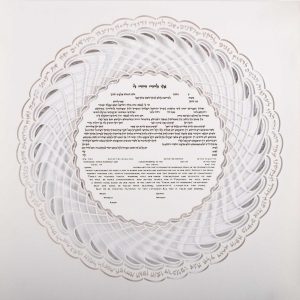
Round ketubah for interfaith weddings
Marrying Style and Text in an Interfaith Ketubah
Couples have a broad choice in the type and style of a ketubah. Danny Azoulay is renowned for his exceptional work in papercut ketubahs, which are especially beautiful in their delicacy. His excellent work, whether in a traditional or contemporary ketubah style, will always make a lasting impression and bring the text to life. Text will be designed to complement the style of the ketubah, and there are several examples of text categories to choose from, from interfaith to contemporary and traditional.
Whatever the couple decides to include or exclude, or whether they decide to customize it completely, securing an excellent ketubah artist makes the job that much easier. Knowing you are using a true artist with the knowledge and experience to produce what you are looking for, takes a huge load off the process. Danny Azoulay is both knowledgeable and experienced in creating truly beautiful ketubahs that will allow the interfaith ketubah text you choose to shine.

